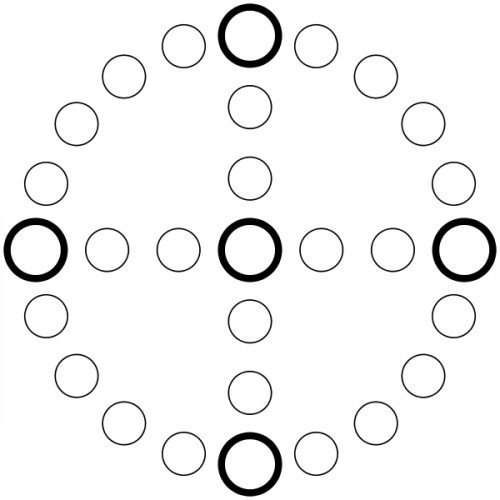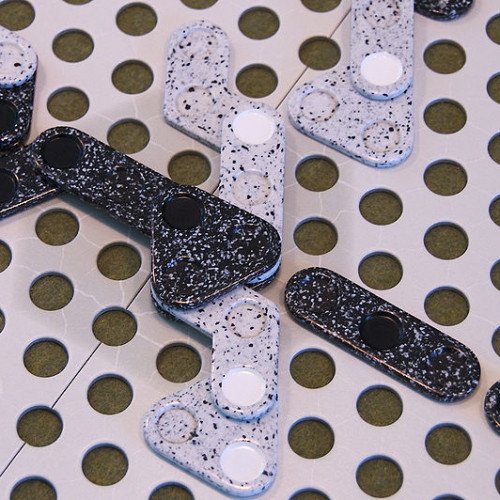CROSS AND CIRCLE GAME VS PÜNCT

CROSS AND CIRCLE GAME
Cross and circle is a board game design used for race games played throughout the world. The basic design comprises a circle divided into four equal portions by a cross inscribed inside it like four spokes in a wheel; the classic example of this design is Yut. However, the term "cross and circle game" is also applied to boards that replace the circle with a square, and cruciform boards that collapse the circle onto the cross; all three types are topologically equivalent. Ludo and Parcheesi (both descendants of Pachisi) are examples of frequently played cruciform games. The category may also be expanded to include circular or square boards without a cross which are nevertheless quartered (Zohn Ahl), and boards that have more than four spokes (Aggravation, Trivial Pursuit). The game board for the Aztec game Patolli consists of a collapsed circle without an interior cross and thus has the distinction of being a cross that is a circle (topologically), without being a cross plus circle. Tokens are moved around spaces drawn on the circle and on the cross, with the goal of being the first player to move all tokens all the way around the board. Generally the circle of the cross and circle forms the primary circuit followed by the players' pieces. The function of the cross is more variable; for example, in Yut the cross forms shortcuts to the finish, whereas in Pachisi the four spokes are used as player-specific exits and entrances to the pieces' home. In non-race games (like Coppit and Trivial Pursuit) all paths may be undifferentiated in function.
Statistics for this Xoptio

PÜNCT
PÜNCT is a two-player strategy board game. It is the sixth (and final) release in the GIPF project of six abstract strategy games, although it is considered the fifth game in the project. It was released in 2005. PÜNCT won the Games Magazine Best Abstract Strategy game for 2007. The PÜNCT board game is one of six games a part of the GIPF project. This project was created by Kris Burm and is a series of six abstract games. PÜNCT is the 5th game of the project and the board of this game is shaped like a hexagon. This game was released in 2005.[citation needed] PÜNCT is a two-player connection game. The objective is to connect two sides of a hexagonal board, using pieces which cover three hexes each. The pieces can be placed, moved, rotated, and stacked in various ways, restricted by the geometry of the board, the shape of the pieces, and gravity. Players can bring new pieces to the board or can attempt to connect the pieces already in play. The objective of the game is to mislead the opponent. When the players take their first turn, they are not able to use the central hexagon. The PÜNCT piece is used as a point of reference throughout the game, but the PÜNCT piece can't be moved when the player is making a move. Minor dots can land on the other player's piece, but the PÜNCT piece may not. In order to make a move, three dots must be in perfect alignment. The pieces that are on top of all of the other pieces have the most power in this game. The dots on the ends of the pieces must be at the same level horizontally to play this game correctly. In order to make a bridge in this game, you must perform a jump move on a piece already on the board. The positions of the dots at the end don't have to be aligned with the middle or stable horizontally. When determining the winner, a player can lift one piece at a time to determine if a connection was made. To connect opposite sides in this game, players can move pieces on top of other pieces or they can stack pieces to block the opponent's connection, ergo, making a connection for themselves. The actual PÜNCT piece, which is a rounded piece that has one point, cannot be used to make a connection or form a “chain” but rather used as a point of reference.